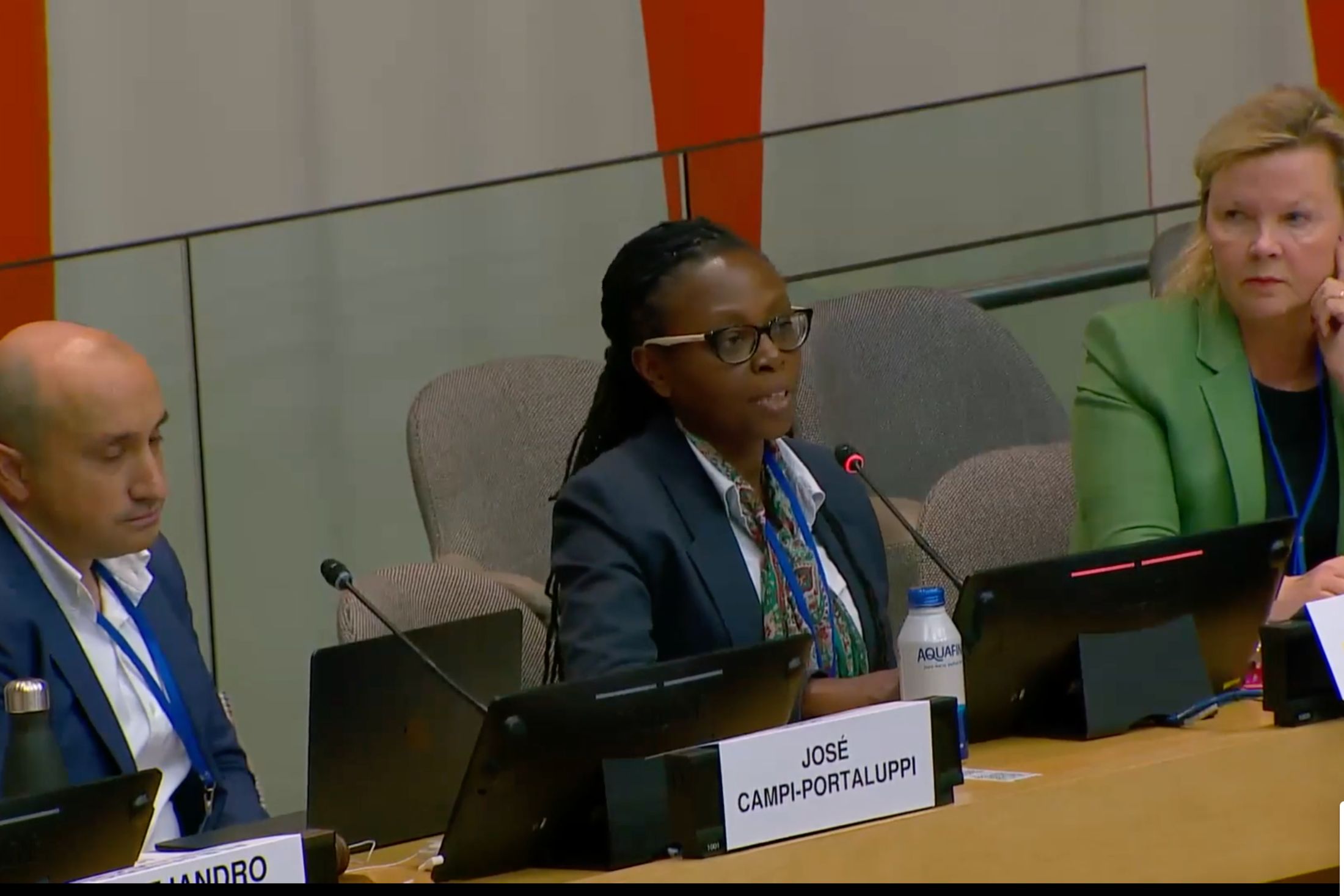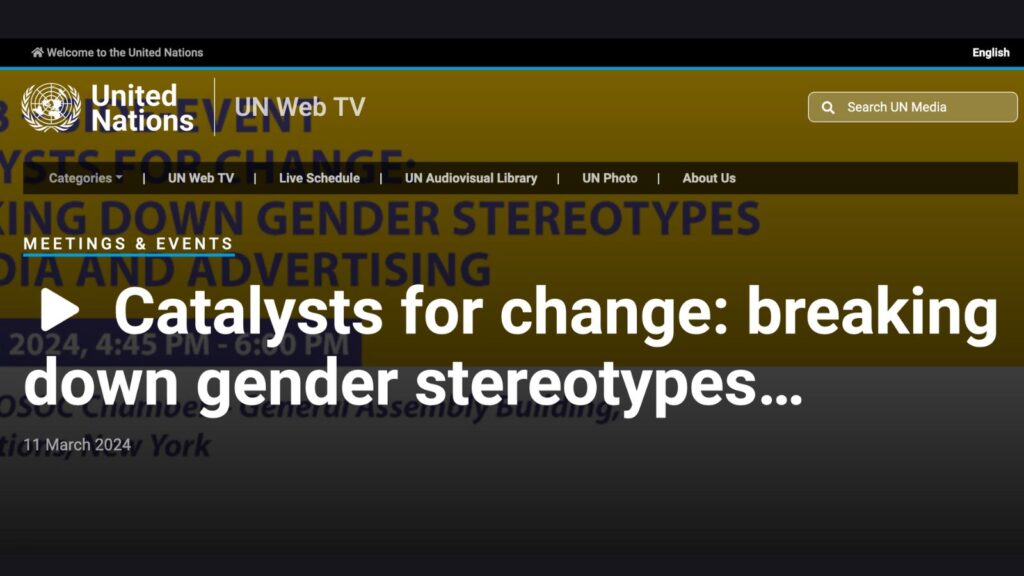
13 Mar Media monitoring key to breaking down gender stereotypes, CSW68 hears
Civil society is a vital catalyst for change when it comes to addressing gender-based prejudices in the news, Sarah Macharia, global coordinator of the Global Media Monitoring Project (GMMP), reported at a side event to the 68th session of the Commission on the Status of Women (CSW68) on Monday in New York.
The GMMP is an important tool to combat sexist media content, Macharia told participants at the side event “Catalysts for Change: Breaking down gender stereotypes in media and advertising,” co-organized by the Council of Europe and the Permanent Mission of Liechtenstein to the United Nations.
She noted that, on the eve of its 30-year anniversary in 2025, the GMMP has “amassed a body of evidence on the gender dimensions of news media,” with at least one data point for 160 nations, including findings for digital media coverage.
67 years to close news gender gap
The research findings make for sober reading, according to the GMMP global coordinator. At the current rate of progress, it will take 67 years to close the news gender gap. “News media are only halfway to reflecting the reality of half of our world.”
The GMMP, the largest and longest-running research on gender in the world’s news media, shows that gender biases in the media have persisted across time, Macharia said.
“The bulk of news stories miss the opportunity to challenge such stereotypes” and even act to reinforce them all too often. Digital news fares little better than legacy media, she added.
News normalizes gender-based violence
Macharia gave the example of stories on forms of gender-based violence, which make up less than 1% of news content. Of this coverage, between 70% and 90% of such stories do nothing to challenge gender stereotypes — and may even reinforce them.
“Fewer than half of these stories highlight gender inequality issues.”
These findings show that this form of human rights violation “continues to be normalized in and through mainstream media coverage,” she said.
Regulation — a pathway to change?
Macharia pointed out that “statutory regulation on gender and media worldwide is actually very scarce despite States being signatories to supranational agreements from [Section J of] the Beijing Platform for Action to newer conventions and instruments that more or less echo” what is in this landmark platform.
While legal frameworks aiming to combat gender prejudice in media content are important, “there are limits to legislation,” she noted, as such regulations are “enacted to address the most serious issues.”
Macharia said civil society initiatives like the GMMP are playing a role to break down gender stereotypes. Media monitoring and advocacy by civil society actors make a needed contribution to challenging structural barriers to gender equality in society and attitudes such as the idea of the inferiority of women as normal and natural.
Co-regulation as possible way forward
“We must talk about co-regulation” as a possible way forward, she stressed. With the rise of anti-feminist movements worldwide, multistakeholder debate processes are needed to complement statuatory and self-regulation.
“Co-regulation comes out of a process of debate and building consensus,” Macharia said, meaning it brings a much higher likelihood of success than other forms of regulation on their own.
In addition to Macharia, the side event panel featured Dominique Hasler, Minister of Foreign Affairs, Education and Sport of Liechtenstein; Alejandro Fiecconi, Global Brand Director at Unilever, Dove Men + Care Masterbrands; José Campi Portaluppi, Director of Communications and Advocacy at Equimundo; Caleb Goodman, Partner and Global Chief Operating Officer at RETHINK Advertising agency; and Bjørn Erik Thon, Equality and Anti-Discrimination Ombud of Norway. Moderator was Marja Ruotanen, Director General of Democracy and Human Dignity, Council of Europe.
GMMP Global Coordinator Sarah Macharia speaks at the CSW68 side event “Catalysts for Change: Breaking down gender stereotypes in media and advertising” on 11 March 2024. Photo from UN Web TV.
Watch the CSW68 Side Event

Learn more
Gender & Media Regulation in Europe
The Council of Europe is the region’s foremost human rights organisation, bringing together 46 member States. Its key instruments to promote gender equality include legislature in the field of media such Article 17 of the Convention on preventing and combating violence against women and domestic violence (Istanbul Convention), Recommendation CM/Rec(2013)1 on gender equality and media, and Recommendation CM/Rec(2019)1 on preventing and combating sexism.

Sorry, the comment form is closed at this time.